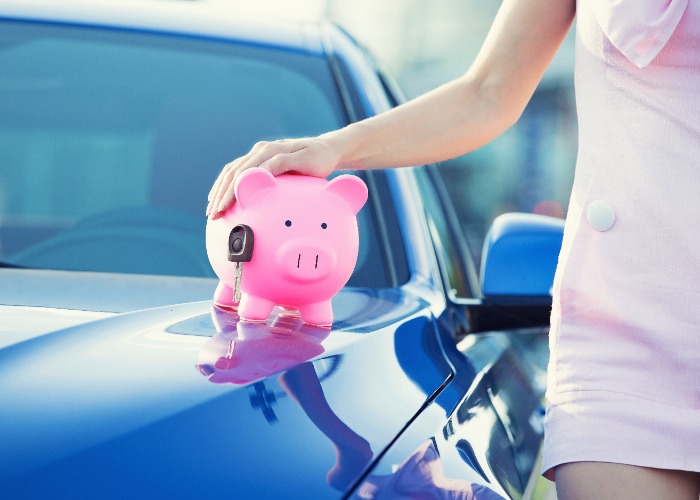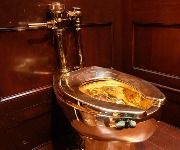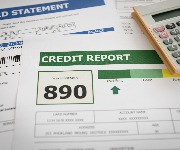Sponsored: how to cut your motoring costs

From earning cashback on fuel to avoiding the false economy of cheap tyres, used-car marketplace Motorway has put together a comprehensive list of tips to help you keep a lid on costs.
Sections
- Stop your motoring bills from spiralling
- 1. Buy fuel at the supermarket
- 2. Get cashback when buying fuel
- 3. Find cheaper local fuel stations
- 4. Convert your petrol car to LPG
- 5. Go to war on car weight
- 6. Buy good-quality tyres
- 7. Inflate your tyres properly
- 8. Don’t strain your car in cold temperatures
- 9. Try to get your car insurance down
- 10. Buy a dash cam
- 11. Use parking apps
- 12. Get your road tax annually
- 13. Make good use of your warranty
- 14. Limit your driving
- 15. Purchase a smaller car
- Sell your car the Motorway way
Stop your motoring bills from spiralling
With fuel prices rising, MOT, tax, regular maintenance, and unexpected repair costs, every driver knows how expensive owning a car can get – and, in these uncertain times, many drivers are looking for ways to cut their motoring costs.
The typical UK motorist spends more than £3,000 running their car each year, according to data from finance guide site Nimblefins.
The biggest expenses are fuel and motor insurance – but there’s also road tax, parking fees, repairs, and servicing costs.
When you purchased your car, it’s very likely that you budgeted based on all these factors and felt the costs were appropriate for your lifestyle.
However, with motoring and living costs rising so dramatically in the last year, car ownership has become a major part of the ‘cost of living’ crisis.
Here are 15 ways to help you stop your motoring bills from spiralling.
1. Buy fuel at the supermarket
If you have a fossil-fuel car, you’ll be aware that petrol and diesel have become increasingly expensive.
In the UK, there is a persistent myth that the fuel bought from supermarkets is inefficient and bad for your engine.
However, it’s not exactly clear how or why this story has been perpetuated.
Supermarket fuel conforms to the British Standard, the same as the fuels from all major oil companies.
Whilst using higher-grade fuels in your car will typically provide a better degree of fuel efficiency, it will usually be insignificant when compared with other factors which affect fuel economies – such as vehicle load, tyre pressure, and weather conditions.
2. Get cashback when buying fuel
If you use a lot of fuel, earning cashback is a great way to cut your motoring costs.
You can do this with a cashback credit card: for example, you can get 5% cashback on all purchases for three months with the American Express Platinum Cashback Everyday Credit Card (29.4% rep. APR), falling to 1% thereafter.
Note you have to spend at least £3,000 a year to earn any cashback so it won't be suitable for everyone.
If you don't like the idea of using a credit card, some debit cards also offer cashback. For example, Chase Bank will pay 1% on all spending you put on its current account.
3. Find cheaper local fuel stations
If you have a fossil-fuel car, performing some research into the cost of fuel at the various stations near you will help you choose where to fill up cheaply.
Try to use a station within a reasonably short distance from your home. It is usually a false economy to drive out of your way to save a small amount on fuel — and there may be cheaper fuel pumps closer than you think.
Even if you only save a few pence on each litre, this can quickly add up over the course of a year – especially if you have a large car.
You can check the prices of fuel in your local area at price comparison websites like PetrolPrices.com and Confused.com.
Read: how to save big every time you fill up your tank
4. Convert your petrol car to LPG
If your focus is on reducing running costs and you clock up a lot of mileage, you could consider converting your car to run on a dual fuel system of LPG (liquid petroleum gas) and petrol. LPG is a by-product of petrol production.
Though cars can’t start on it, they can run on it. It’s not just cheaper than petrol, but it’s taxed less too.
One of the reasons for that is it’s much better for the environment than petrol and diesel.
When LPG burns it creates up to 80% less NO2 than diesel and around 5-7 times less than petrol.
There is an upfront cost to installing an additional tank in your car and converting the engine. However, depending on your drive time, you could save hundreds or even thousands on your fuel bills each year.
The installation would pay for itself after two years on average, so this is a medium-term saving strategy rather than a quick fix to get through a hard winter.
5. Go to war on car weight
Generally, each 50kg weight inside your car increases fuel consumption by 2%.
Removing any unnecessary weight could lead to big savings over the year.
So, if you’re driving around with heavy loads in your car, it might be costing you more than you think.
If you have a roof rack that you’re not regularly using, you should consider removing it.
Roof racks also create drag on your car which also increases fuel consumption.
6. Buy good-quality tyres
Though buying cheap tyres will save you money in terms of initial outlay, in the long run, this saving is likely to be a false economy.
The tyres will probably need replacing much sooner, so you’ll spend more time and money than you thought.
Tyres can also determine your fuel efficiency.
Those with a higher rolling resistance will usually lead to higher fuel usage. Different tyres are designed to offer greater fuel efficiencies – and this can be vital if you want to decrease your car’s running costs.
7. Inflate your tyres properly
As with using poor-quality tyres on your car, if your tyres are under-inflated it will lead to greater rolling resistance and you’ll end up using more fuel to cover the same ground.
If your tyres are under-inflated by just 15psi, it could result in additional fuel use of around 6%.
Having underinflated tyres will reduce your car’s miles per gallon (MPG), which could cost you an extra £65 a year.
To reduce the likelihood of this, you should regularly check your tyre pressure at a garage or fuel station.
8. Don’t strain your car in cold temperatures
Pushing your car in cold temperatures will use more fuel than is necessary as fossil-fuel cars are less efficient in low temperatures.
This is because engine and transmission friction increases in low temperatures due to engine oil and other drive-line fluids needing to warm up to their requisite fuel-efficient temperature.
This will negatively impact shorter journeys more, as the car will spend a greater percentage of travel time trying to heat the fluids to an optimal temperature.
9. Try to get your car insurance down
Most drivers will simply accept the automatic renewal quote from their insurer. However, this is rarely the best quote they are authorised to give you.
When your insurance is about to renew, contact them and try to get the price down. If they are unwilling to reduce your premium, look elsewhere.
If you want to make further reductions, consider how you drive. For example, you should always remain inside the national speed limit.
Getting a speeding ticket is liable to increase your premium. Additionally, if you reduce the annual mileage on your vehicle by cutting back on unnecessary journeys, this will positively impact your insurance premium.
10. Buy a dash cam
Installing a dash cam can reduce your insurance premium by about 25% and contribute to getting your No Claims Bonus or discount. However, it’s worth pointing out that if you’re not such a careful driver, having a dash cam could cost you more money!
Some new high-spec cars are starting to come with pre-installed dash cams, such as the Citroen C3 Flair Plus.
BMW offers the dash cam as an extra across their range.
For the most part, though, drivers can order one online or buy one in a hardware shop and install it themselves.
Dash cams shouldn’t be too pricey to buy and install, as many drivers already know.
Dash cams are becoming very popular, with more than 50% of British drivers saying they consider this tech a motoring essential.
11. Use parking apps
Apps like ParkBee and Parkopedia can help you identify cheap car parks wherever you travel in the UK.
This could make you great savings over the course of a year – especially if you use your car a lot.
New apps like JustPark allow British residents to hire out their own private parking spaces, which can often provide an even cheaper and more convenient alternative.
12. Get your road tax annually
All UK drivers must buy car tax for their vehicles. This money is used by the government to keep the streets clean, and fund required road work and maintenance.
UK drivers are given the option to pay their road tax in a single annual payment, once every six months, or monthly.
If you can do so, it makes sense to pay your road tax in one single payment. Single yearly payments are the cheapest option, but it will depend on your finances if you can afford to pay this way.
13. Make good use of your warranty
You’ll always save money in the long run by keeping your car in good condition.
This means regular servicing and maintenance and opting for high-quality replacement parts where necessary.
If your car has any faults, you want to discover them as early as possible. Making good use of your warranty for free or subsidised repairs can save you thousands later.
14. Limit your driving
It’s not as easy as advising drivers to ‘drive less’.
Depending on where you live and your typical journeys, driving can work out much cheaper than any other transport option.
However, it’s smart to think carefully about whether you’re getting return on investment for your motoring costs.
Do you plan your trips? It’s a good idea to group errands and trips into one circular route, rather than taking frequent, short-to-medium drives.
Can any of your regular trips be arranged as a carpool?
If you alternate a couple of weekly drop-offs and pick-ups with another driver who lives near you, you’ll both be cutting your fuel costs and emissions significantly.
Are there any routes you normally drive, but could cheaply and easily switch to public transport?
If you’re a multiple-car household, it’s worth assessing whether you actually need more than one car.
If you do need a larger primary car as well as a runabout, consider a small and/or electric secondary car, to cut the running costs.
15. Purchase a smaller car
Selling your car to downsize the cost could put your mind at ease during this economically turbulent time.
Used cars are fetching good prices currently and there’s more stock than ever available to purchase.
You might be surprised at how much you could get for your current car.
Depreciation is mostly determined by your car’s age and mileage, but there are some big brand-to-brand differences too.
If you drive a brand of car that holds its value better than the competition, this could be a particularly hot tip for you.
It’s worth considering selling your current car and switching to a cheaper model or a car that’s cheaper to run.
Over the next few years, we can predict that electric cars will remain cheaper both in terms of fuel, taxes, and charges.
You can also investigate buying a ‘runout’.
When a car model is being redesigned and relaunched, the existing stock becomes the older generation – and these previous models or ‘runouts’ sell cheaper.
To see if selling your car to downsize could be the solution for you, get a free Motorway valuation now by entering your reg number in the box below.
Sell your car the Motorway way
If you’re thinking about selling your car quickly and easily, Motorway offers a simple – and completely free – method of getting the best price, whatever your model.
Just enter your reg on Motorway’s website and you will be provided with an instant estimated sale price based on up-to-the-minute market data.
They’ll then ask you a few easy questions about your car and guide you through the photos you need to take to complete your vehicle profile.
It can usually be done right from your phone – in a matter of minutes.
If you choose to enter your car into their daily sale, it will be shown to Motorway’s nationwide network of more than 5,000 verified dealers looking to add to their stock of used cars. Interested dealers will then compete to buy your car, offering you their best price.
In as little as 24 hours you will receive your car’s best offer – and, if you choose to go ahead with the sale, your car will be collected for free by the dealer and the money will be quickly and securely transferred to your bank account.
This is a paid promotion on behalf of Motorway and does not necessarily reflect the views of loveMONEY.
Most Recent
Comments
Be the first to comment
Do you want to comment on this article? You need to be signed in for this feature








